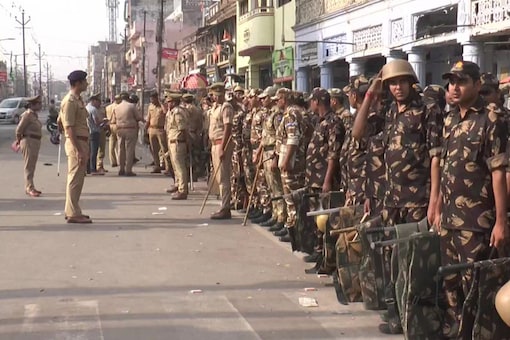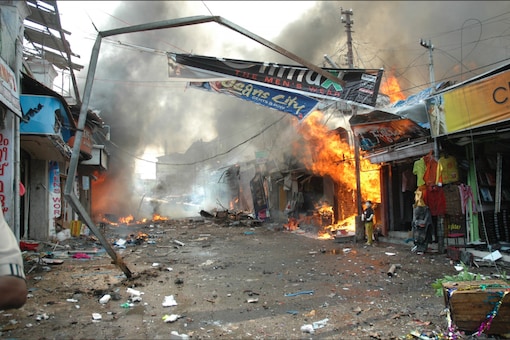The 1941 Dacca riots are, strangely, the least talked about in the popular narrative on communal violence in Bengal. These riots had set the tone for anti-Hindu violence in future
It has been a year since unprecedented violence took place in West Bengal after the Assembly election results were announced. Why has Bengal been suffering violence (both West Bengal and Bangladesh)? What was the original demographic composition of Bengal and how has it changed; and how this has affected the socio-political milieu in this region? This multi-part series would attempt to trace the origin of socio-political trends in the larger Bengal region (state of West Bengal and Bangladesh) over the last several decades. These trends are related to the evolution of Bengal over the last 4000 years. It’s a long journey and unfortunately most part of it has been forgotten.
When it comes to popular narrative related to the communal violence in Bengal, the 1941 Dacca (Dhaka) riots are, strangely, the least talked about even when these riots had actually set the tone for anti-Hindu violence in the future.
The Dacca riots had two significant characteristics — first, political parties openly supporting the rioters and second, forcible conversion of Hindus to Islam. The pattern of rioting also underwent some change as massive stabbings were reported in 1941 compared to sporadic stabbings during earlier riots in Bengal. The stabbings, subsequently, became the hallmark of anti-Hindu violence in Bengal.

The Dacca riots began on March 14, 1941. They are also called ‘Holi riots’ because the violence erupted as a reaction to Holi celebrations at a market of Hindu artisans, called Shankhari Bazar. The riots lasted till April 29 although sporadic incidents of violence continued to be reported till end of May.
According to Suranjan Das (Communal Riots in Bengal: 1905-47, pp 143), “Violence spread rapidly to the countryside and culminated in general Muslim rising … Altogether 2734 incidents were reported in the city and suburbs; 3000 people were rendered homeless; 109 people lost their lives; 2080 in urban and 1690 in rural areas were arrested on various rioting charges.”
Anwseha Roy highlights the significance of these riots in Making Peace, Making Riots: Communalism and Communal Violence, Bengal 1940-47 (pp 25-58), “The Dacca riots of 1941 engulfed not only the city of Dacca but also the countryside specifically, the thanas (police stations) of Raipur, Shibpur and Narsinghdi. It was in a way harbinger to the horrors that would unleash in 1946-the Great Calcutta killings and Noakhali riots … it is in several ways key to understanding the later riots that shook Bengal a year before independence and partition.”

POLITICAL SUPPORT TO RIOTERS
When these riots happened, Bengal was ruled at the provincial level by the Muslim League with Fazlul Huq as the chief minister. In the 1937 provincial elections, three main parties had contested polls — the Congress Party, the Krishak Praja Party (KPP) led by Fazlul Huq and the Muslim League. The KPP had a strong base among Muslims in rural Bengal while the Muslim League found support among urban Muslims in West Bengal. All three parties contested independently in these polls. The Congress got 54 seats while the KPP got 36 seats and the Muslim League won 39 seats. The Congress refused to have an alliance with Huq, who then formed an alliance with the Muslim League. Later in 1937, Huq joined the Muslim League.
Many commentators of that era have said that he was forced to join the Muslim League by Muhammad Ali Jinnah so that he could save his government. Later, he quit the Muslim League in 1940s. While there have been divergent opinions about Huq, the composition and complexion of the provincial government of Bengal was undoubtedly and absolutely pro-Muslim and anti-Hindu. The ministers in Huq government were known to interfere at the district and even sub-division level across the province to compel the administration to adopt a pro-Muslim stand. The Congress and Hindu Mahasabha used to oppose such moves but the pro-Muslim bias of the government continued. This also gave a signal to the Muslims that they could take law and order in their own hands and the ruling dispensation would back them against Hindus. The impact of this political support to Muslim communalists was evident in Dacca riots.
Analysing these events, Das said (pp 144-145), “The formation of the Huq government in 1937 … had given the Bengali Muslim political elite their first taste of power … The ministry sought to improve Muslim representation in the bureaucracy by a systematic increase in the ratio of Muslim officials, especially at the district level … During the months preceding the outbreak, the League ministers had toured Dacca extensively at a public expense to propagate the idea of Pakistan … Muslim peasants became markedly defiant about paying rent (to) their Hindu zamindars (landlords), and local League leaders such as Abdul Aziz, MLA, addressed meetings in villages, urging the audience to drive out the Hindus and establish a Muslim raj.”
Sensing full political support to Muslim communalism, the Muslim press minced no words and openly threatened Hindus. Just a month before the outbreak of Dacca riots, a well-known pro-Muslim newspaper Star of India reported on March 1941:
“The time has come for little rats (Hindus) to know that the lion (Muslims) is not dead, only sleeping; the challenge is to be accepted; the enmity is to be met on its own ground; … the Hindus will see to whom Bengal belongs; they shall be taught the lesson they need.”
Another widely circulated newspaper Azad published a highly provocative poem which was reportedly recited at a couple of Muslim League conferences. This Bengali poem ended with this call to Muslims: If you want freedom, Burn! Burn! Burn! the jatu griha (lac houses) and let all troubles end.
The political support for the rioters was evident as one goes through the report of the Enquiry Committee which was set up after the riots. Officially known as ‘Report of the Dacca Riots Enquiry Committee, Government of Bengal, Home Department,’ it had several Hindu witnesses narrating how mobs numbering 200 to 2,000 attacked their houses and the leaders of the rioters told them they have been given seven days by the administration to do whatever they could against Hindus. In fact, during the riots, while the League leaders were provided free access to the riot-affected areas, the Congress and the Hindu Mahasabha leaders were not allowed to visit the suffering Hindu community.

FORCED CONVERSIONS
Roy has dwelt in detail on this issue as she explains (pp 51-52), “Forced conversions were a novelty for the 1941 riot. While there were no reported cases of conversion to Islam from the city (probably, because Hindus were in majority in urban areas), several were reported from rural areas. No specific numbers were, however, available. Many witnesses from Raipura, Shibpur and Narsinghdi gave evidence of forced conversion or attempts at conversion before the Enquiry Committee (also known as DERC). According to the report of the DERC, instances were both numerous and widespread. One Hindu witness … (said) … that after his house was looted, a number of Muslims came to him on April 4 and told him that if he did not embrace Islam, his house would be burnt. His family was forced to recite kalma and wear a lungi, and a paper was given to him with the instruction that if any Muslim later came to burn his house, the piece of paper should be shown to him. The contents of the paper could be translated as, ‘We of Laterba Palpara have embraced the sacred Islamic faith. Every Muslim should see to it that no house of Laterba is molested.’ It was signed by one Maulvi Korbanali of Sachimara.”
Several such incidents were reported, according to the DERC. Another such incident was reported by one Mr Mukherji who was additional superintendent of police. He reported that this incident occurred on April 3, 1941. According to the DERC, on his way to quell fire, he (Addl SP Mukherji) heard shouts of Allah-hoo-Akbar at a distance. Reaching the house from where the slogans could be heard, he found a large number of people assembled. Some people were arrested after the Hindu owner of the house complained of attempts at forced conversion. On a table in the room, there was a paper which read, ‘We the following persons accept Islam voluntarily and in good faith.’
According to Roy (pp 52), “Almost all cases of loot, arson followed the same pattern. First, Hindu inmates were asked if they would convert to Islam. If they agreed, they were immediately made to go through a formal ceremony of conversion. In some cases, houses of converted Hindus were spared from loot and arson, but they were informed that a common feast would soon be held where they would have to eat beef and marry off ‘their women’ to Muslims.”
Roy sums up the implications of all these developments aptly (pp 58), “The Dacca riots of 1941 stood at the crossroads in the history of communal violence in Bengal. It ushered in a new form of communal violence. The scale of riots also got larger from here. In a way it was precursor to the genocide of 1946-47, as after this, the communal atmosphere in Bengal intensified steadily. The world of organised politics increasingly tied itself into popular perceptions of community interests.”
Source: News18
